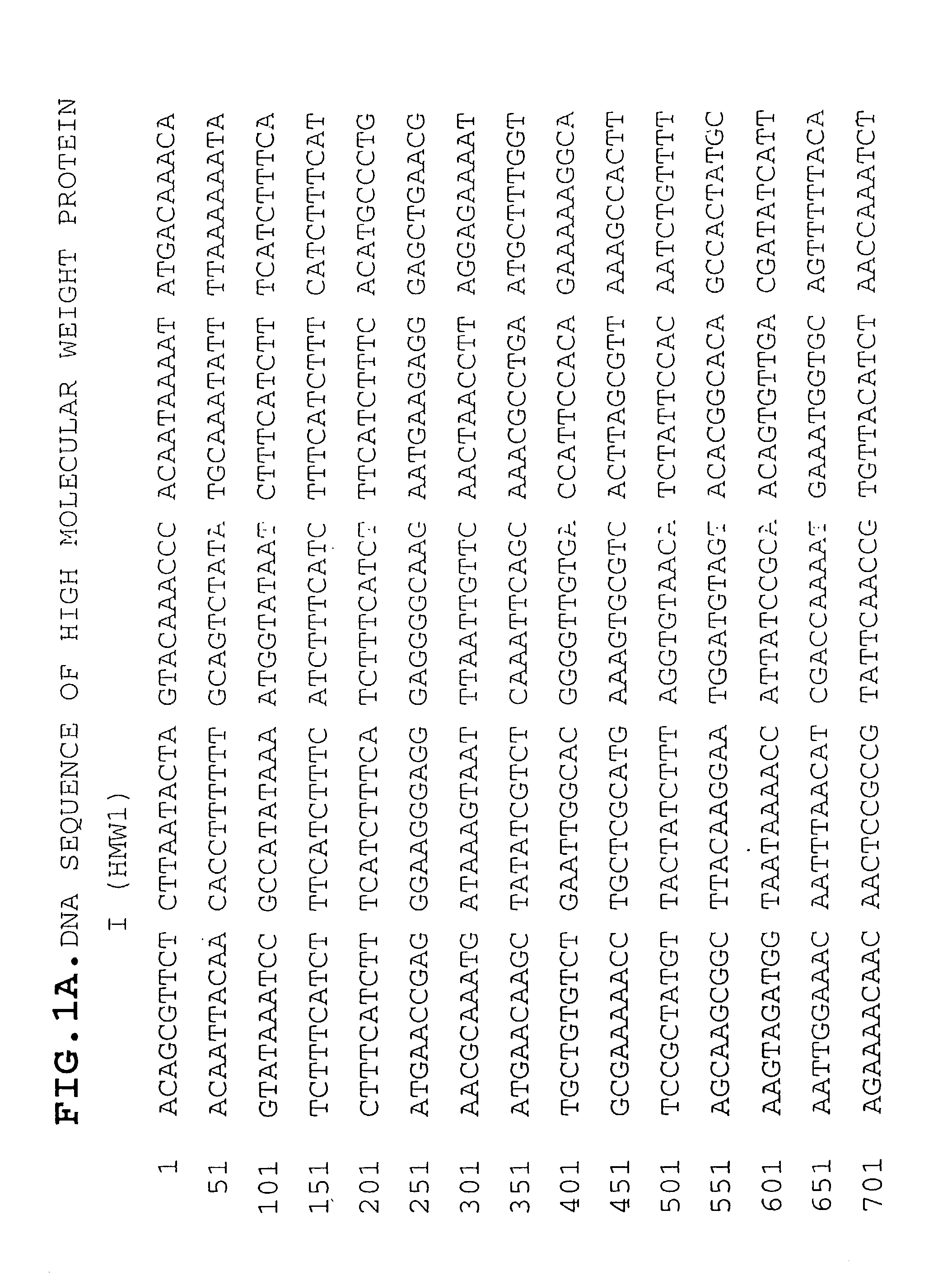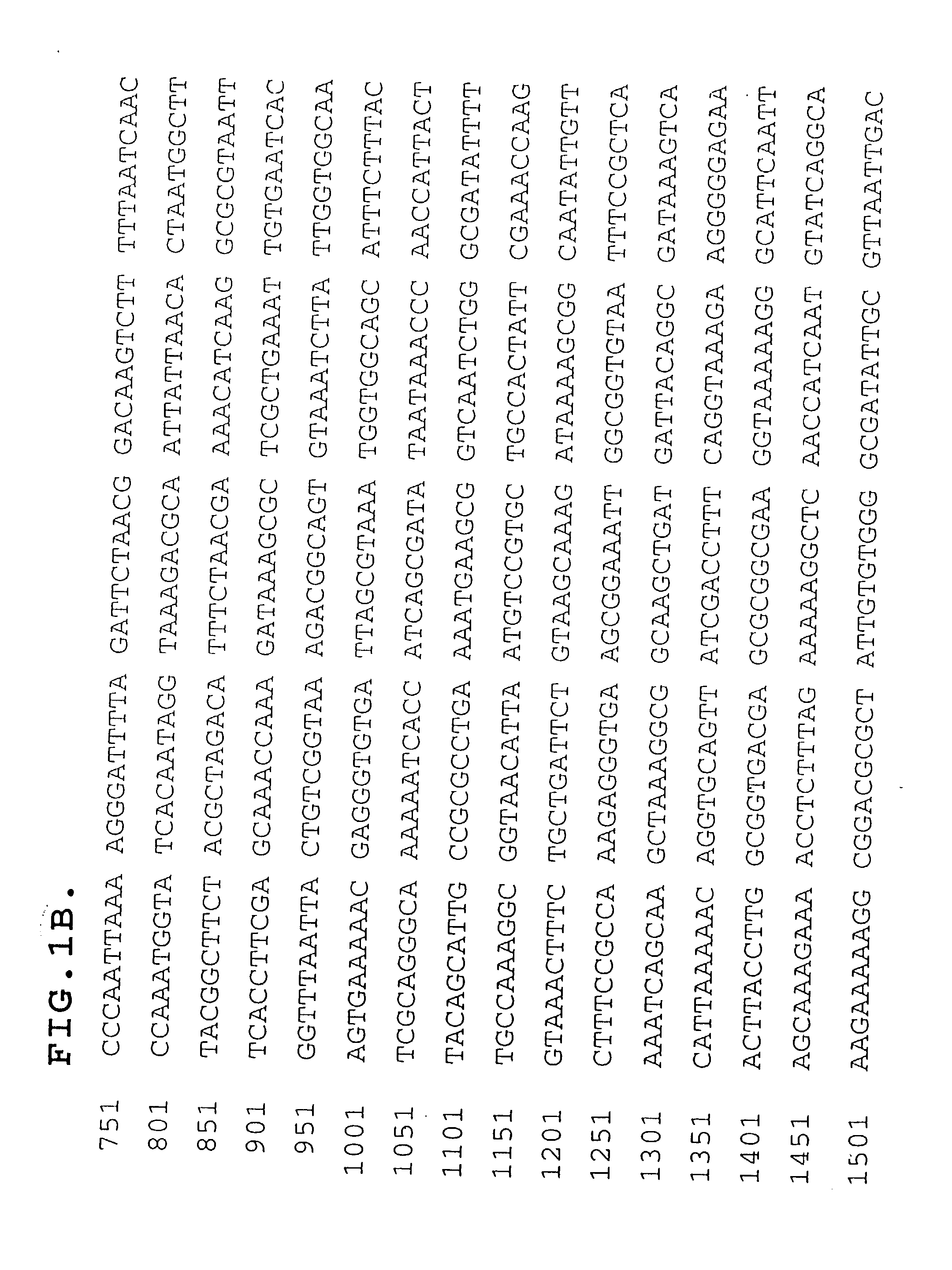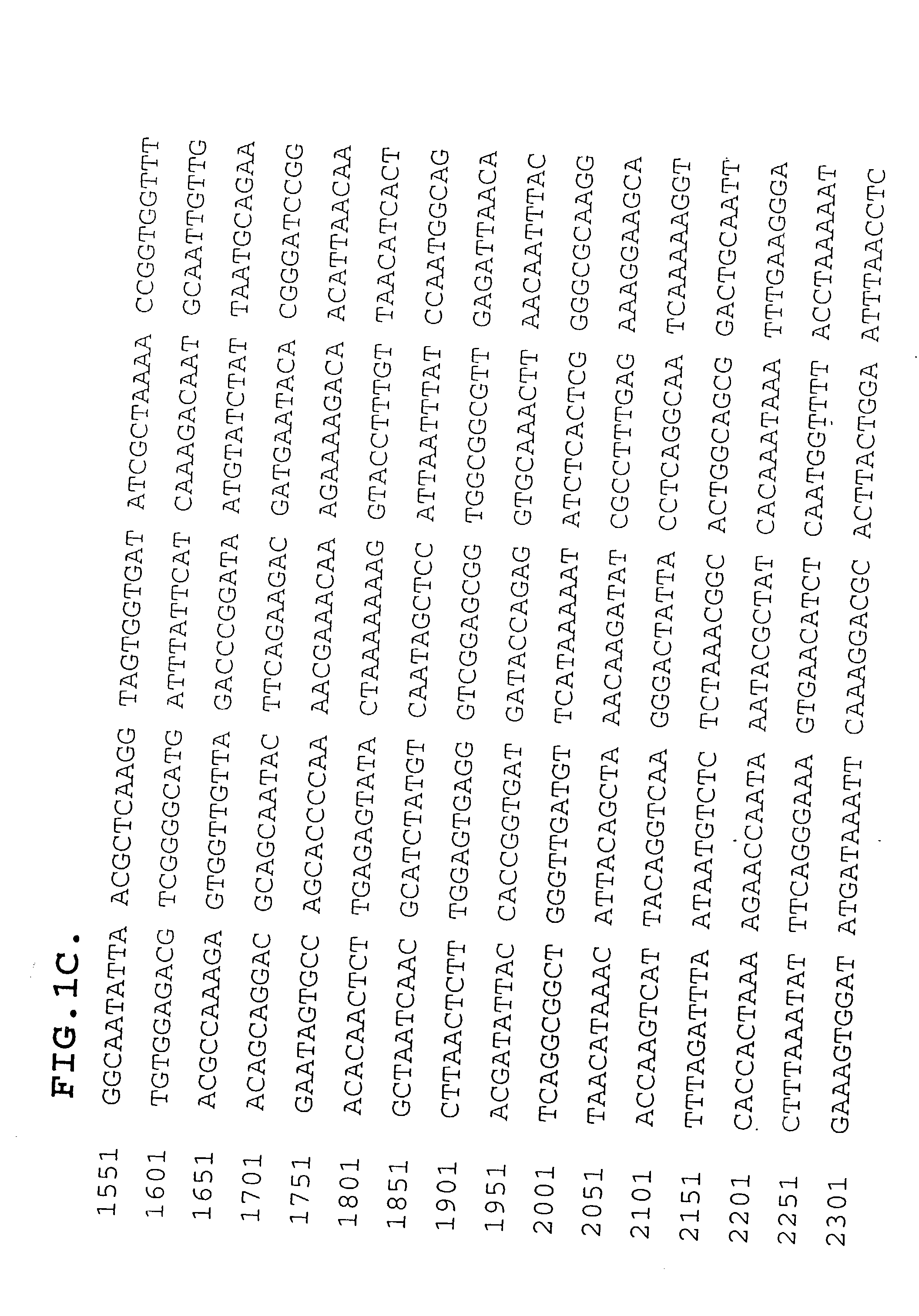High molecular weight surface proteins of non-typeable haemphilus
a technology of surface proteins and haemophilus, which is applied in the field of high molecular weight surface proteins of non-typeable haemophilus, can solve the problems that the p2-based vaccine would not protect against all strains of the organism
- Summary
- Abstract
- Description
- Claims
- Application Information
AI Technical Summary
Benefits of technology
Problems solved by technology
Method used
Image
Examples
example 1
[0138] This Example describes the isolation of DNA encoding HMW1 and HMW2 proteins, cloning and expression of such proteins, and sequencing and sequence analysis. of the DNA molecules encoding the HMW1 and HMW2 proteins.
[0139] Non-typeable H.influenzae strains 5 and 12 were isolated in pure culture from the middle ear fluid of children with acute otitis media. Chromosomal DNA from strain 12, providing genes encoding proteins HMW1 and HMW2, was prepared by preparing Sau3A partial restriction digests of chromosomal DNA and fractionating on sucrose gradients. Fractions containing DNA fragments in the 9 to 20 kbp range were pooled and a library was prepared by ligation into .lambda.EMBL3 arms. Ligation mixtures were packaged in vitro and plate-amplified in a P2 lysogen of E. coli LE392.
[0140] For plasmid subcloning studies, DNA from a representative recombinant phage was subcloned into the T7 expression plasmid pT7-7, containing the T7 RNA polymerase promoter .PHI.10, a ribosome-binding...
example 2
[0160] This Example describes the relationship of filamentous hemagglutinin and the HMW1 protein.
[0161] To further explore the HMW1-filamentous hemagglutinin relationship, the ability of antiserum prepared against the HMW1-4 recombinant protein (rHMW1) to recognize purified filamentous hemagglutinin was assessed (FIG. 13). The rHMW1 antiserum demonstrated ELISA reactivity with filamentous hemagglutinin in a dose-dependent manner. Preimmune rabbit serum had minimal reactivity in this assay. The rHMW1 antiserum also was examined in a Western blot assay and demonstrated weak but positive reactivity with purified filamentous hemagglutinin in this system also.
[0162] To identify the native liaemophilus protein corresponding to the HMW1 gene product and to determine the extent to which proteins antigenically related to the HMW1 cloned gene product were common among other non-typeable H. influenzae strains, a panel of Haemophilus strains was screened by Western blot with the rHMW1 antiserum...
example 3
[0165] This Example describes the adhesin properties of the HMW1 and HMW2 proteins.
[0166] Mutants deficient in expression of HMW1, HMW2 or both proteins were constructed to examine the role of these proteins in bacterial adherence. The following strategy was employed. pHMW1-14 (see Example 1, FIG. 5A) was digested with BamHI and then ligated to a kanamycin cassette isolated on a 1.3-kb BamHI fragment from pUC4K. The resultant plasmid (pHMW1-17) was linearized by digestion with XbaI and transformed into non-typeable H. influenzae strain 12, followed by selection for kanamycin resistant colonies. Southern analysis of a series of these colonies demonstrated two populations of transformants, one with an insertion in the HMW1 structural gene and the other with an insertion in the HMW2 structural gene. One mutant from each of these classes was selected for further studies.
[0167] Mutants deficient in expression of both proteins were recovered using the following protocol. After deletion of...
PUM
| Property | Measurement | Unit |
|---|---|---|
| Fraction | aaaaa | aaaaa |
| Atomic weight | aaaaa | aaaaa |
| Atomic weight | aaaaa | aaaaa |
Abstract
Description
Claims
Application Information
 Login to View More
Login to View More - R&D
- Intellectual Property
- Life Sciences
- Materials
- Tech Scout
- Unparalleled Data Quality
- Higher Quality Content
- 60% Fewer Hallucinations
Browse by: Latest US Patents, China's latest patents, Technical Efficacy Thesaurus, Application Domain, Technology Topic, Popular Technical Reports.
© 2025 PatSnap. All rights reserved.Legal|Privacy policy|Modern Slavery Act Transparency Statement|Sitemap|About US| Contact US: help@patsnap.com



